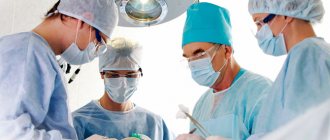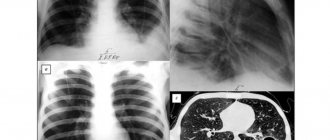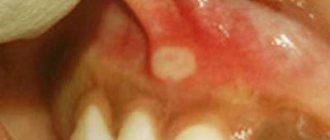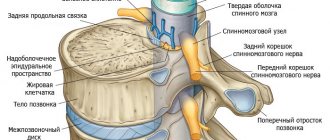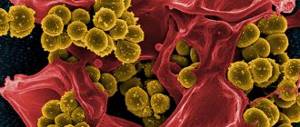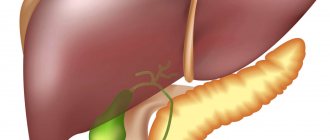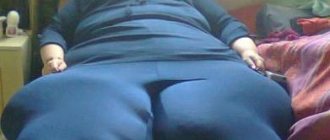Basic information
Nephroptosis is a disease characterized by a violation of the location of the kidney. It manifests itself as increased mobility of the organ, which is considered pathological.
As a result, a displacement occurs in which the renal bed moves to the lower side, sometimes reaching the pelvic cavity.
According to the ICD, nephroptosis of the kidney refers to unspecified diseases of the kidneys and ureter and is coded N28.8. Most often, the development of this condition is associated with a violation of the ligamentous apparatus, resulting in its weakening.
Diagnostics
The disease has a code according to ICD 10, nephroptosis belongs to class XIV of diseases of the genitourinary system. Therefore, diagnostics are carried out using standard methods. The first thing that is done after visiting a doctor is that the patient undergoes a short survey. At this point, the doctor collects information about the symptoms and the time of their onset. Afterwards, an examination is carried out by palpation through the abdominal cavity.
The second stage is the appointment of laboratory tests for increased protein and an increased number of red blood cells. The most basic examination is urography. This x-ray procedure is performed using a contrast agent in a horizontal and vertical position of the patient's body. Urography of the kidneys helps to establish the exact location of the organ, the stage of development of the disease and the condition of the organ’s vessels.
After a course of treatment, doctors may prescribe an ultrasound examination, which determines the degree of development of nephroptosis. All examinations are carried out as soon as possible after the patient contacts the doctor. It is best to go to a hospital during the examination period, where it is possible to conduct more examination procedures, and be under round-the-clock supervision of qualified specialists.
Disease statistics
This pathology is not common in the modern structure of kidney diseases. In this case, most often, according to research, changes occur in the right kidney, while the left kidney is less susceptible to changes in position.
Persons of any gender are susceptible to the development of nephroptosis, but the majority are women. The average age at which the condition is diagnosed is 20 to 45 years.
It is extremely rare in children; most kidney mobility at this age is associated with anatomical defects or injuries.
Traditional methods and physical therapy
The patient can do physical therapy for kidney ptosis both in the exercise therapy room at the clinic and at home, when he learns how to perform all the exercises correctly. The peculiarity of the exercises is that they are all performed while lowering strictly while lying on your back. It is very important to observe the rhythm of breathing.
A set of therapeutic exercises is shown in the video:
- Exercise No. 1. Place a cushion under your lower back. Inhale and simultaneously bend your left leg at the knee. As you exhale, straighten. Repeat the exercise on each leg 15-20 times.
- Exercise No. 2. As you inhale, raise both legs, and as you exit, lower them. Repeat the exercise 10 times.
- Exercise No. 3. Inhale and at the same time inflate your stomach. Hold your breath for 2 seconds. After this, exhale and at the same time draw in your stomach as much as possible. Hold your breath for 2 seconds. Repeat the exercise 10 times.
- Exercise No. 4. Raise both legs. Inhale and at the same time spread your legs to the sides. As you exhale, bring your legs together and lower them to the starting position. Repeat the exercise 10 times.
This exercise is an excellent prevention of complications with ptosis.
Treatment of the disease with traditional methods
Herbs will not return the kidney to its place, but they can be used to prevent complications. The recipes are very simple and yet effective:
- Take 100 g of knotweed infusion half an hour before meals 3 times a day.
- Eat pumpkin or sunflower seeds
- Dilute your diet with any nuts, eat them raw
- Pour 2 tbsp. Kochia broom 1.5 tbsp. boiling water, pour into a thermos. Leave overnight. Then strain the infusion and drink 50 g between meals.
- Sprinkle 1 handful of flax seeds with water, add 0.5 tsp. powdered sugar. Then fry in a frying pan without adding oil. Chew the seeds as desired, just like regular sunflower seeds.
If a patient wants to use folk remedies, he must notify his doctor about this.
Etiology and pathogenesis of the disease
Normally, the kidney has little mobility, which should be no more than the length of one vertebra. If it is exceeded, it is necessary to look for the cause, of which we can highlight:
- Rapid loss of body weight , during which there is a slow restoration of the elasticity of the ligamentous apparatus, as well as the return of the anatomical position of the organs.
- Gaining weight too quickly . In this case, the above structures, on the contrary, do not become sufficiently elastic; they quickly overstretch, which very often cannot be restored.
- Traumatic injuries to the abdominal and lumbar organs . Most often, a traumatic tear of the retaining apparatus occurs, or the formation of a hematoma or infiltrate, which provokes a change in the position of the organ.
- Childbirth . During pregnancy, a woman, due to compression of the internal organs by the uterus, increases intraperitoneal pressure, and the kidney rises slightly. But, after childbirth, there is a sharp decrease in the volume of the abdominal cavity and the pressure decreases. The ligamentous apparatus is stretched and does not recover for a long time
Classification and stages of the disease
There are several classifications by which nephroptosis is divided. Determining the stage of the pathological process is of great importance for further treatment tactics and patient management.
Kidney mobility can be:
- right-sided;
- left-handed;
- bilateral.
The stages of occurrence are divided into:
- prolapse of the kidney which is no more than within one vertebra, but this is observed only when a person takes a vertical position;
- prolapse within two vertebrae, appears in different body positions;
- prolapse at level three; upon palpation, a formation can be detected in the pelvic area.
Surgery
The second and third stages of the disease are most often treated with surgery. This operation is called nephropexy and is performed under general anesthesia. Most often, access to the left kidney is provided using the laparotomy method or laparoscopy. An incorrectly positioned kidney is attached to soft or bone tissue. For this purpose, a muscle flap is used. To prevent recurrence of the disease, a fragment of the peritoneum is sutured to the capsule of the filtering organ.
If surgery on the abdominal wall is contraindicated for the patient, access to the kidney is through small incisions in the lumbar region.
Manifestation of symptoms
A specific symptom of nephroptosis is pain, mainly in the lumbar region.
General symptoms include disorders of the digestive tract, loss of appetite, nausea, and vomiting.
Sometimes headaches are observed, which are most often associated with the development of hypertension. When inflammation occurs, constant pain occurs, with a characteristic aching character, and impaired urination, which is detected using a urine test.
Depending on the stages of the process, the following symptoms are distinguished:
- First . At this stage of the course of the disease, there are almost no symptoms, only in some cases patients note the appearance of pain, mainly of a dull nature, which will be localized in the lumbar region. Their appearance is facilitated by previous heavy physical activity, as well as a prolonged vertical position. When you take a lying position on the affected side, the symptoms disappear completely. But more often this stage of the process is detected during a random examination of the patient.
- Second . It is characterized by the fact that pain occurs more and more often, mainly in an upright position, and its intensity can also increase as the prolapse progresses. In addition, sometimes there is irradiation throughout the lower back or abdominal cavity, less often into the bladder or stomach. Throbbing pain resembles renal colic. Laboratory tests can reveal proteinuria and erythrocyturia.
- Third . The patient actively complains to the doctor, since his physical activity and lifestyle are disrupted due to pain, and his psychological state suffers. Pain bothers a person almost constantly; he is forced to find positions in which there is a decrease in pain, but there is almost no decrease in pain.
Symptoms of nephroptosis
With nephroptosis, signs may not appear for a very long time, and the pain is attributed to fatigue, exacerbation of colitis, cholecystitis.
If kidney prolapse is detected, the symptoms of treatment depend on the stage of development of ptosis. Pathology can be determined at the stage of renal amplitude of 5 cm, but characteristic signs are revealed later. If the right kidney is prolapsed, then manifestations occur on the right: pain and heaviness under the ribs, however, regardless of the ptosis of the right or left kidney below two vertebrae, multiple pathologies develop:
- the organ can rotate around a vertical axis;
- normal blood circulation is difficult;
- a bend of the ureter appears;
- Urine stagnation occurs, which causes the development of infections.
With nephroptosis, signs may not appear for a very long time, and pain is attributed to fatigue, exacerbation of colitis, cholecystitis. It is especially dangerous if one kidney prolapses - in this case, patients begin to pay attention to the symptoms only in the second stage of the pathology and the main complaints: pain in the lower back, abdomen, constant tingling sensation in the side, nausea, fever.
Important! In women, ptosis can only manifest itself as constant pain in an upright position with an unpleasant feeling of heaviness in the abdomen. Often, patients endure the pathology until the third stage, when sediment forms in the urine, the pain becomes excruciating, and there is an unpleasant smell and color of the urine. If the right kidney or left organ is prolapsed and the disease reaches stage III, oxalates accumulate in the urine - this leads to the formation of stones with all the manifestations of kidney stones: blood in the urine, severe cramping pain, increased body temperature. Pain when the kidneys prolapse often radiates to the cervical spine - a sensation of “lumbago” throughout the back, radiating to the groin, leg, side. In patients with heart failure, tachycardia and sudden surges in pressure may occur.
Diagnostic methods
To make this diagnosis, it is initially necessary to interview the patient and examine him. The doctor needs to find out in what position the symptoms usually occur, after which the pain increases when relief occurs.
A thorough history survey is carried out.
The presence of previous diseases, infections, as well as injuries and a sharp decrease in body weight is of great importance. The examination begins with an assessment of the body type, the degree of development of subcutaneous fat and the muscular system.
After this, the palpation method begins.
For a more accurate diagnosis, examination is required not only in a supine position, but also in a standing position.
The percussion method is also considered equally important.
It allows you to indirectly judge the position of the organ. Of the instrumental research methods, ultrasound plays a great role. It is also recommended to carry it out with a change in body position. One of the main ones is considered to be X-ray.
To make a diagnosis, the method of excretory urography is used, an X-ray of a positive substance is administered, which does not affect the body. The method allows you to evaluate not only the location of the organ, but also its functioning and the degree of blood flow.
Consequences of pathology formation
Unfortunately, many ailments that in one way or another affect the genitourinary system affect human health. When the kidneys prolapse, long-term unpleasant consequences develop, which largely worsen the quality of life. Their formation depends not only on the patient’s behavior, but also on the correctness and timeliness of the diagnosis.
In practice, the author of this article supervised a patient who for a long time could not obtain a conclusion about the state of his health, since his rural hospital did not have special equipment. Despite all the studies, it was not possible to detect stage 1 prolapse of the right kidney, although the patient complained of discomfort in the lumbar region. After two years of diagnostic search using magnetic resonance imaging in the regional medical center, a pathological neoplasm of a malignant nature was discovered, which provoked the prolapse of the organ. The patient was successfully operated on, but his rehabilitation period dragged on for several years due to late diagnosis.
Possible consequences of kidney prolapse:
- Tendency to develop infectious and inflammatory diseases of the genitourinary system. Often, pyelonephritis, cystitis and urethritis form in a weakened body with low immunity. When an organ prolapses, it is at a functional disadvantage: it does not receive the optimal amount of oxygen-rich arterial blood and nutrients, which makes it an easy target for various bacteria. It has been scientifically proven that people with this diagnosis are twice as likely to see a doctor with inflammatory problems of the pelvic organs.
- Acute or chronic kidney failure. This is an extremely dangerous disease, which is associated with the accumulation in the body of a huge amount of toxins and wastes that clog the blood vessels. Gradually, the human body becomes no longer able to utilize harmful products of its own production, which contributes to the onset of a coma or uremic poisoning.
- Problems with bearing a child occur in almost 50% of women suffering from nephroptosis. During pregnancy, the body takes on a double load, since some of the blood flows to the fetus: it is necessary to clean it as much as possible from harmful impurities. The kidneys gradually weaken and cannot provide the flow of fluid with oxygen to the placenta (baby place). This causes the development of such serious complications as intrauterine growth retardation, respiratory distress syndrome, miscarriage, infection and even the death of the child. Many children are born with serious problems of the respiratory and cardiovascular systems.
- Organ shrinkage. When the kidney prolapses, its supplying arteries and veins are compressed and deformed, and some tissues are less well supplied with blood. They gradually begin to die and shrink, making it look like a raisin. Unfortunately, the kidney soon mummifies and is perceived by the body as a foreign body (a purulent-septic process may begin), which leads to its complete removal. Such patients are required to attend hemodialysis for life - a complex procedure for artificial blood purification by driving it through special filtration systems.
Photo gallery: consequences of the disease
Shriveled kidney reduced in size
Coma is a serious condition characterized by depression of consciousness
A premature baby is born earlier due to mother's kidney problems
Methods of therapy
There are several ways to treat nephroptosis, traditional methods are considered to be fundamental. Folk remedies can be used as a supplement to existing ones.
Traditional medicine
Treatment of nephroptosis begins primarily with the prescription of non-drug methods.
They include lifestyle changes; it is recommended to exclude heavy physical activity, heavy lifting, and prolonged exposure to a forced position.
For asthenic body types, it is recommended to gain muscle mass, which will include proper protein nutrition, as well as physical exercise. It must be remembered that weight gain should be gradual, without sudden jumps.
If a person is obese, then to treat nephroptosis it is necessary to organize a set of weight loss measures.
To do this, the diet includes daily physical exercise, such as short walking, swimming, etc., as well as a nutritious low-calorie diet.
A bandage is selected for all pregnant women, as well as people with identified decreased ligamentous apparatus of the kidney. To obtain the effect, it is necessary to comply with all the rules for its use.
Hydrotherapeutic measures can increase the elasticity of the ligamentous apparatus. For their implementation, all contraindications are taken into account. Therapeutic contrast showers, douches, and hardening are highly effective.
Medications are aimed at suppressing the current inflammatory process.
These are most often antibacterial agents and uroseptics.
Antihypertensive drugs are used when renal hypertension is detected. In this case, preference is given to drugs that improve renal blood flow and have a diuretic effect.
In case of severe symptoms, large prolapse, as well as changes in blood flow, excretory function and recurrent inflammatory processes, surgical treatment is recommended. Currently, both laparotomic and laparoscopic approaches are used equally, which are aimed at restoring the supporting function.
If possible, preference is given to laparoscopy, since the risk of complications in this case is minimal, and the rehabilitation period is much shorter.
Traditional methods
When nephroptosis occurs, they are not able to completely rid a person of the disease, but at the same time they are aimed at preventing the development of complications.
Most often these are herbal preparations. Some of the most common are dill and parsley.
They are able to increase the rate of urine outflow, as well as improve its discharge, in addition, they have a weak bactericidal effect and reduce cholesterol levels in the blood.
The resulting infusion is prepared by mixing dry herbs with boiling water in a ratio of 1 tablespoon to 1 glass of water. To get the effect, you need to let the mixture brew in a thermos overnight. You can consume it throughout the next day, in small sips, in a volume of 400 ml.
Lingonberry leaves, which are also brewed in boiling water, also have a pronounced anti-inflammatory effect. To do this, use 1 tablespoon of dry lingonberry leaf and 200 ml of water. For the purpose of prevention, you can also use cranberry juice. To do this, during the period when symptoms appear, it is recommended to drink 1 glass of drink per day.
Complications
When this organ prolapses, the topography of the ureter is disrupted, as a result of which it can change its location and become compressed.
There is a disturbance in the outflow of urine, which leads to congestion in the kidneys. Accumulated urine causes an inflammatory process.
Therefore, nephroptosis can cause diseases such as cystitis, pyelonephritis, and urolithiasis.
In addition, there is a violation of the anatomical location of the vascular component. As a result, arterial hypertension of renal origin develops.
Causes of kidney prolapse
Specialists from the urology department of our medical center in St. Petersburg identify many factors that can provoke the development of nephroptosis. The most significant of them include:
- rapid weight loss - as a result of following a strict diet or due to illness;
- excessive physical activity. Most often, kidney prolapse is a consequence of heavy lifting
; - displacement of the right, left or both kidneys can occur due to injury to the lumbar region with hematomas of the subcutaneous fat localized near the kidneys;
- nephroptosis can occur due to serious diseases of infectious origin that affect the kidneys - hydronephrosis, pyelonephritis, etc.;
- Prolapse of the kidneys in women is much more common than in the stronger sex. This is due to connective tissue fibers that are much more elastic than men’s, as well as their much less strong and robust abdominal muscles.
Disease Prevention
Prevention includes several basic rules that are aimed at preventing the onset of the disease, here are the main ones:
- heavy physical activity should be avoided, sports associated with a sharp increase in intraperitoneal pressure should be completely excluded, these include lifting weights, weightlifting and others;
- activity should be one of the components of lifestyle, preferably walking, active games, general physical fitness;
- if you are overweight, you need to make efforts to reduce it, but this needs to be done gradually, because a sharp decrease in body weight leads to the fact that the ligamentous apparatus has not yet had time to recover;
- work that is performed in a tilted position should be limited, such as activities such as weeding, washing clothes by hand, and so on;
- Pregnant women after 20 weeks of pregnancy should wear a prenatal bandage;
- In children, the prevention of nephroptosis consists in the formation of posture, as well as timely treatment of a curved spine.
By following these simple rules, you can easily prevent this disease, alleviate symptoms or promote a speedy recovery.
Diagnosis and treatment of nephroptosis
Nephroptosis can be easily detected by performing an ultrasound of the kidneys.
Usually, an ultrasound examination is sufficient to confirm nephroptosis, but if necessary, the doctor may prescribe contrast radiography of the kidneys, radionuclide examination, computed tomography or magnetic resonance imaging.
Treatment of this disease can be conservative or surgical; the choice of treatment tactics depends on the stage of the process, the presence of disturbances in the functioning of the prolapsed kidney and complications.
Conservative treatment
If the prolapse of the kidney is insignificant and the function of the organ is not impaired, then special treatment is not required. The doctor may recommend wearing a special bandage, as well as therapeutic exercises aimed at strengthening the muscles of the anterior abdominal wall and back. It should be noted that wearing a bandage is contraindicated in patients whose prolapsed kidney is fixed with adhesions. People diagnosed with nephroptosis are advised to avoid heavy lifting and strenuous physical activity, and certain sports may also be contraindicated. In addition, patients need to undergo periodic examinations in order to monitor kidney function, as well as the degree of its prolapse.
If the cause of nephroptosis is sudden weight loss, then it is necessary to restore sufficient nutrition, sometimes this is enough to return the kidney to its bed.
It should be understood that the use of medications will not help put the prolapsed kidney in place. Drug treatment is prescribed by a doctor only if complications develop. Antibacterial, anti-inflammatory, antispasmodic and analgesic agents are usually used. With the development of renal hypertension, the prescription of antihypertensive drugs is ineffective.
Surgical treatment
In the absence of effect from conservative therapy, increasing hypertension and the development of complications that threaten the patient’s health, surgical treatment is recommended. During the operation, nephropexy is performed (the kidney is fixed in the renal bed). Currently, most patients undergo surgery laparoscopically. This method of surgical intervention is the most gentle for the patient, since access to the surgical field is performed through several small incisions on the anterior abdominal wall. This reduces the risk of postoperative complications and shortens the recovery period. If necessary, the surgeon can also perform abdominal surgery.
Usually, after surgery, the outflow of urine is restored and blood pressure normalizes.


